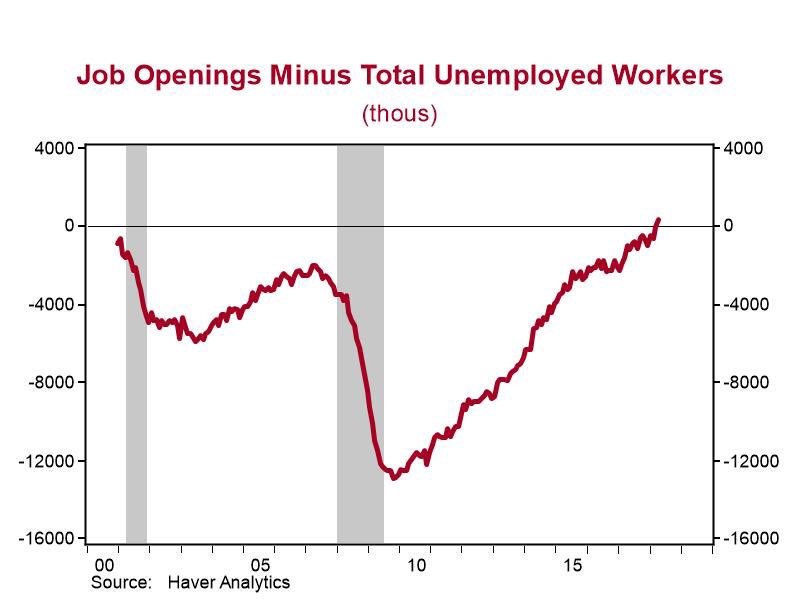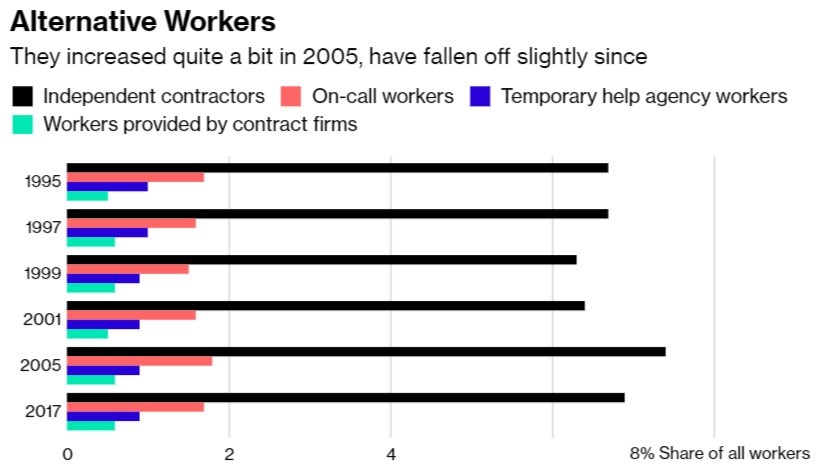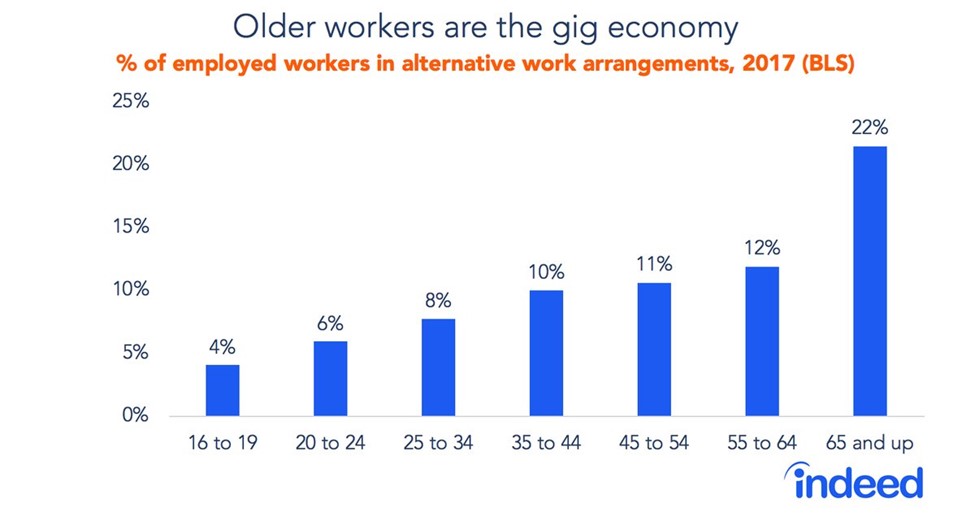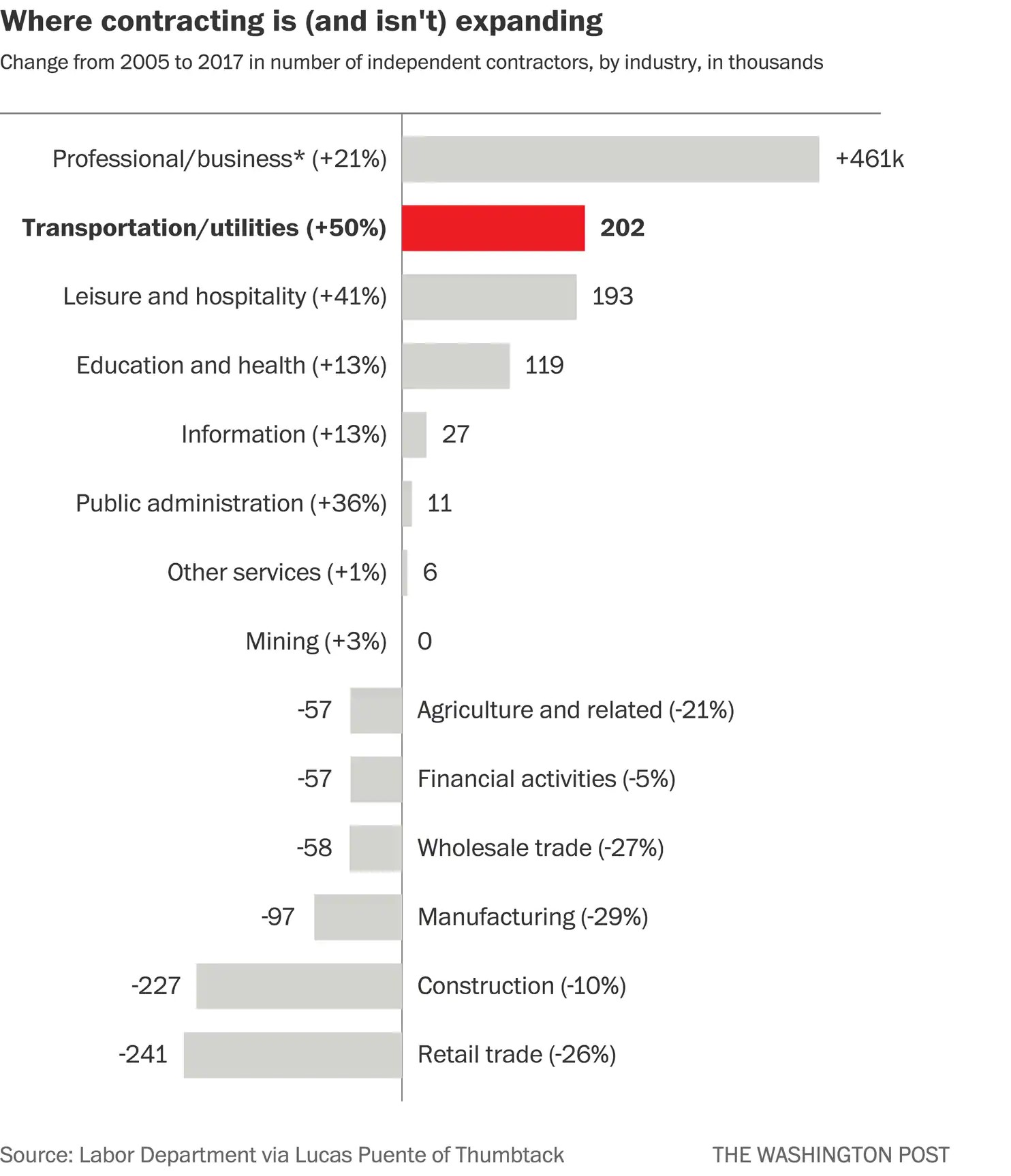UPFINA's Mission: The pursuit of truth in finance and economics to form an unbiased view of current events in order to understand human action, its causes and effects. Read about us and our mission here.
Reading Time: 5 minutes
In an article from December 2017 we described the new ‘gig economy.’ For those unfamiliar, the gig economy is a reference to freelancers and short-term contract work becoming more prevalent in the economy. As we mentioned in the previous article, the results from surveys showed that independent contractors actually declined from 2014 to 2017. The big increase was in diversified workers which are defined as workers who have multiple sources of income in which they mix traditional employers with freelance work. They can work at a traditional company full-time or part-time and have what is colloquially known as a side job.
One of the debates among economists and activists is if workers having a side job is good for society. Some who are deeply on the side of workers rights complain that an American family used to be able to survive on one income and now it can’t even survive on two incomes, meaning a side job is also needed. There has been disappointing wage growth in this business cycle according to many metrics. If wage growth improves, then there will be less need for an additional source of income. The labor market now has more job openings than unemployed workers, as you can see from the Haver Analytics chart below. This could mean a side job is easier to acquire.

Source: Haver Analytics
Even with the tightest labor market of this expansion, there needs to be economic growth driven by productivity growth to boost wages. It’s also easier than ever to get a side job because of freelance websites like Fiverr and Upwork. There are also ride sharing apps like Uber and Lyft which allow anyone access to additional income with little effort. There’s no question that wage growth being higher would be better for workers and put them in a better financial situation where they don’t need to work more. Ignoring the controversy about whether some independent contractors are really employees, the option of having a side job isn’t bad in itself. A person can always use extra money. For some independent contractors, the side job can be fun. If you start your own Etsy store, you can pursue a passion on the side which also generates income.
Mythbusting The Mythbusters
The catalyst for this article is the latest BLS report on the ‘gig economy.’ This report was highly anticipated because it was the first update in 13 years. The mobile internet was in its infancy in 2005 and ridesharing apps didn’t exist. In fact, Etsy and Fiverr didn’t exist then either. Upwork was started in 2015, but its predecessor Elance was founded in 1999. If you didn’t read our article in December, then you would’ve expected the number of independent workers to increase since it’s always talked about in the news how the ‘gig economy’ is increasing. Plus, you’ve probably used the services of a freelancer or an independent contractor.
The report showed what we already knew. As you can see in the Bloomberg chart below, independent contractors as a percentage of the labor market has fallen since 2005.

Source: Bloomberg
This caused many analysts to claim the ‘gig economy’ is a myth. They are wrong. The increase of the ‘gig economy’ is not a myth at all. As we discussed in our article, the diversified worker contingent of the ‘gig economy’ is driving overall growth. This survey only asked people about their primary job, ignoring questions about side jobs even though that’s where the growth is. Everyone working as a diversified worker was counted as a traditional worker. This survey doesn’t tell us much about the growth in side jobs and misdirects analysts into claiming the ‘gig economy’ is dead.
What We Learned From The Report
The BLS report wasn’t completely useless. It gave us detailed insight into the trends within the independent contractor work segment. The chart at the end of this article from the Washington Post shows the industries within contracted work which added and subtracted workers from 2005 to 2017. The biggest increase came from professional/business as it increased 21%, adding 461,000 jobs. This segment is mostly older baby boomers who retire from their traditional jobs and work as consultants. These are great jobs which pay well and offer flexibility.
This is an important takeaway. The ‘gig economy’ isn’t just made up of 2nd class workers who get low pay and no benefits. There are many workers who love their jobs and get paid well. The rise of the ‘gig economy’ isn’t a bad thing and it’s also not solely focused on millennials who can’t afford basic necessities. As you can see from the Indeed chart below, the largest category of independent contractors are 65 years old or older.

Source: Indeed
We disagree with the title. Older workers dominate independent contracting work, but they aren’t the ‘gig economy.’ Many younger people are diversified workers. This chart makes the same mistake many in the media have made which is conflating independent contractors with the ‘gig economy.’
The 2nd bar on this chart is transportation and utilities which added 202,000 jobs which is a 50% increase from 2005. This includes Uber and Lyft drivers who do it as their main job. Working for Uber and Lyft isn’t an ideal main gig because they don’t offer healthcare benefits. Complaining about ride sharing apps not offering benefits is like complaining about entry level jobs paying the minimum wage. Ride sharing apps are meant to be a side job and entry level jobs are meant to help workers get on the first rung of the employment ladder. The leisure and hospitality segment added 193,000 jobs which was a 41% increase. This is likely the category boosted by Airbnb. Many Airbnb hosts do it as a side job for extra money and for enjoyment.

Source: Washington Post
Conclusion
It’s surprising to see so many prognosticators claiming the growth in the ‘gig economy’ is a myth when this BLS report does nothing to dispel the fact that more people are becoming freelancers and diversified workers. The hope every worker has is they earn enough money to survive from their full-time job and only use side jobs as an additional convenient way of generating more income. However, many workers unfortunately need to rely on their side job to pay the bills. The internet has provided new ways to allow people to make money as a hobby such as creating a YouTube channel or managing social media accounts. This is an unmitigated positive. While there are many positives, there are some negatives as well that come with the ‘gig economy’. For instance independent workers don’t get the same benefits as full-time employees. In addition, despite the expansion of the freelance economy, where there is more opportunities to start a business and in theory competition should flourish, as we have demonstrated in a previous article, unfortunately, there has been an increased concentration of industries in America, less startups and less small businesses.
Have comments? Join the conversation on Twitter.
Disclaimer: The content on this site is for general informational and entertainment purposes only and should not be construed as financial advice. You agree that any decision you make will be based upon an independent investigation by a certified professional. Please read full disclaimer and privacy policy before reading any of our content.










